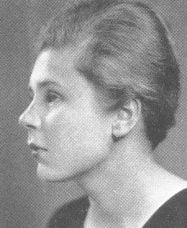What Is the Style of the Poem One Art
The Poetry of Loss: An Analysis of "One Fine art" by Elizabeth Bishop
By | On | Comments (0)

Elizabeth Bishop's villanelle "One Art" was 1 of the offset poems I read and analyzed at a higher level. It'southward as well one of my favorites. Hither is an analysis of "Ane Fine art" that can exist interpreted from the perspective of wherever the reader is in their ain life.
We've all, in our unique ways, experienced loss. Endless poems attempt to capture the nature of loss. Elizabeth Bishop was a detail-oriented author, and the particularity of "Ane Fine art" makes the feel of reading it all the more sensitive and meaningful. It's truly a one-of-a-kind poem.
"One Art" intimately captures the feeling of loss for the reader. Although the poem is more often than not autobiographical, it simultaneously acts as a mirror, forcing the reader to reflect on their own losses. This is perchance why "One Art" is and so valuable and memorable. Its relatability makes it hard to forget.
Elizabeth Bishop experienced loss at an early age. Her father died when she was an infant, and her mother was institutionalized when she was just v years old. Later in her life, Elizabeth lost her spouse to suicide. Intense loss followed her through life.
. . . . . . . . . .

Learn more about Elizabeth Bishop
. . . . . . . . .
In "Ane Art," Bishop attempts to pass up the severity of loss. The verse form begins with her intentionally flimsy argument: "The art of losing isn't hard to principal." Throughout the verse form she speaks straight to the reader; every bit if to say, "Look, if I tin lose, you can lose just besides."
After reading the first stanza, the reader might begin to search through their own life, finding their own "yous" to identify within Bishop's words.
From there, we see a buildup of losses, each arguably worse than the last. Bishop begins the poem with losing common, tangible objects, like house keys. She then urges the reader to lose the intangible; like memories and names. Throughout the poem she tries to remind the reader that "their loss is no disaster." It becomes increasingly difficult to convince fifty-fifty herself of that towards the finish.
Bishop so urges the reader to practice "losing farther, losing faster." Almost creating a snowball outcome of loss within the poem, in the next few stanzas she begins losing bigger things; her mother's scout, the cities she lived and loved.
The final stanza is intentionally flustered. Bishop somewhen describes the hardest loss, that of a loved one, seeming to speak direct to them.
. . . . . . . . .
One Art
The fine art of losing isn't hard to chief;
then many things seem filled with the intent
to be lost that their loss is no disaster,
Lose something every twenty-four hours. Accept the fluster
of lost door keys, the hr badly spent.
The art of losing isn't difficult to master.
Then do losing farther, losing faster:
places, and names, and where it was y'all meant
to travel. None of these volition bring disaster.
I lost my mother's sentinel. And expect! my last, or
next-to-terminal, of 3 loved houses went.
The art of losing isn't hard to chief.
I lost two cities, lovely ones. And, vaster,
some realms I owned, two rivers, a continent.
I miss them, but information technology wasn't a disaster.
— Even losing you (the joking voice, a gesture
I love) I shan't accept lied. It's evident
the art of losing's not too hard to master
though it may look like (Write it!) like disaster.
. . . . . . . . . .
Elizabeth Bishop wasn't a particularly prolific writer. Finishing only effectually a hundred poems in her lifetime, she was quite item, and her poems were calculated. Her poignant nature reveals something well-nigh her intentions within "One Fine art" — the pieces that appear discomposed are wholly deliberate. She was trying to announced unpolished.
In the concluding line of the poem, she repeats the word "similar" twice. This wasn't an accident, but rather, an effort to physically reveal her dissonance within the poem. She is trying to tell the reader, "the fine art of losing is hard to master."
I see this poem in my own life, through my own losses. Every bit I write this, I'm sitting in my empty higher flat, actively practicing the art of losing. It's universally relatable. Elizabeth Bishop simply stated what we all feel. We all want to principal the art of losing, fifty-fifty though it never gets easier. She knew this; nosotros all do. That'south what makes the verse form so like shooting fish in a barrel to cherish.
. . . . . . . . . .

See also: 8 Iconic Poems by Elizabeth Bishop
. . . . . . . . . .
More information and sources
- nineteen Lines That Turn Anguish into Art
- Poets
- Poetry Foundation
- A Conversation with Elizabeth Bishop
- Lone with Elizabeth Bishop
- It'south Always a Good Time to Revisit the Brilliance of Elizabeth Bishop
Visit and enquiry
- Elizabeth Bishop Business firm and Lodge of Nova Scotia
- The Elizabeth Bishop Papers at Vassar College
Contributed by Jess Mendes, a 2021 graduate of SUNY-New Paltz with a major in Digital Media Direction, and a pocket-sized in Artistic Writing.
Categories: Literary Analyses
Source: https://www.literaryladiesguide.com/literary-analyses/an-analysis-of-one-art-by-elizabeth-bishop/
0 Response to "What Is the Style of the Poem One Art"
Post a Comment